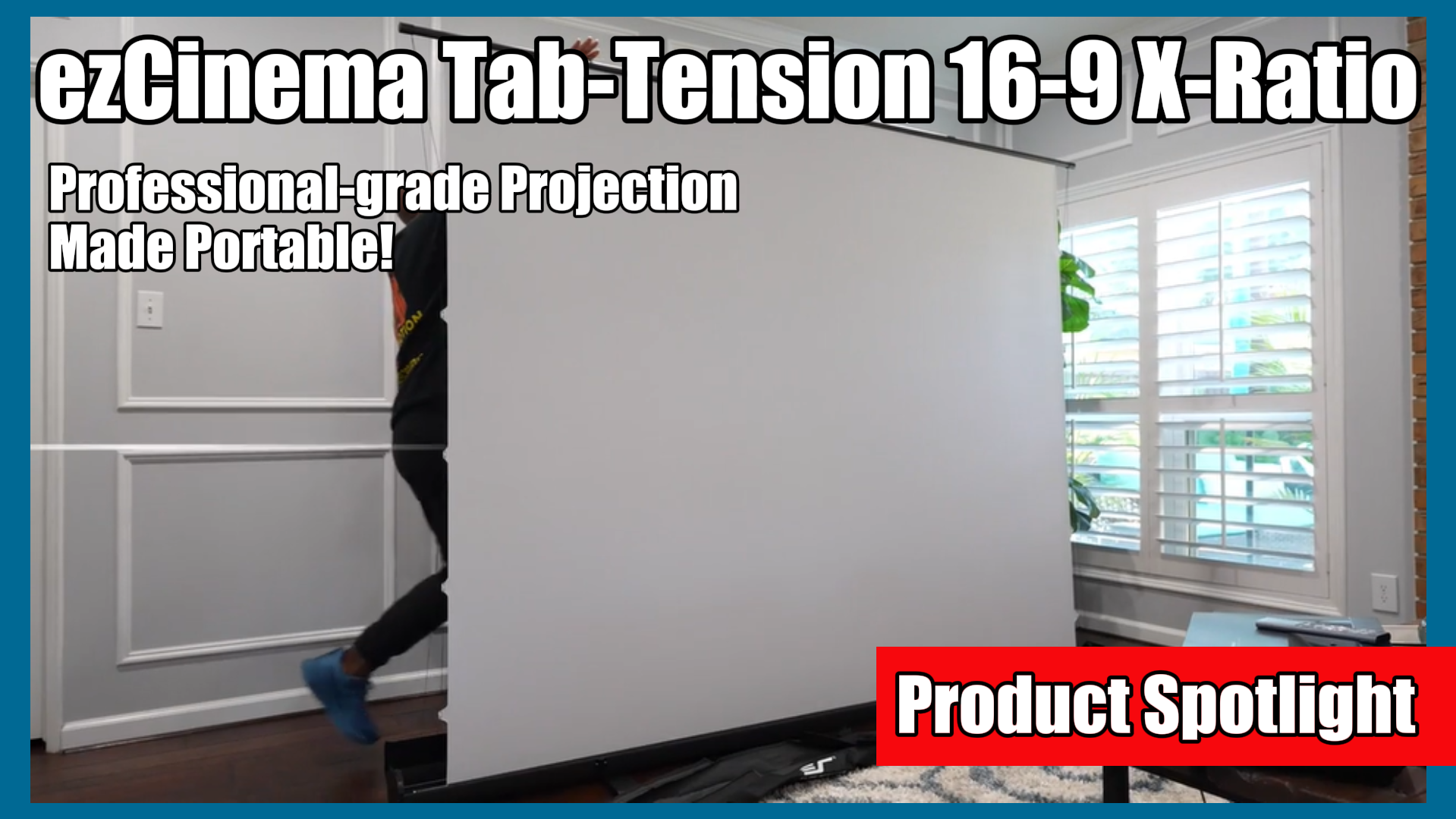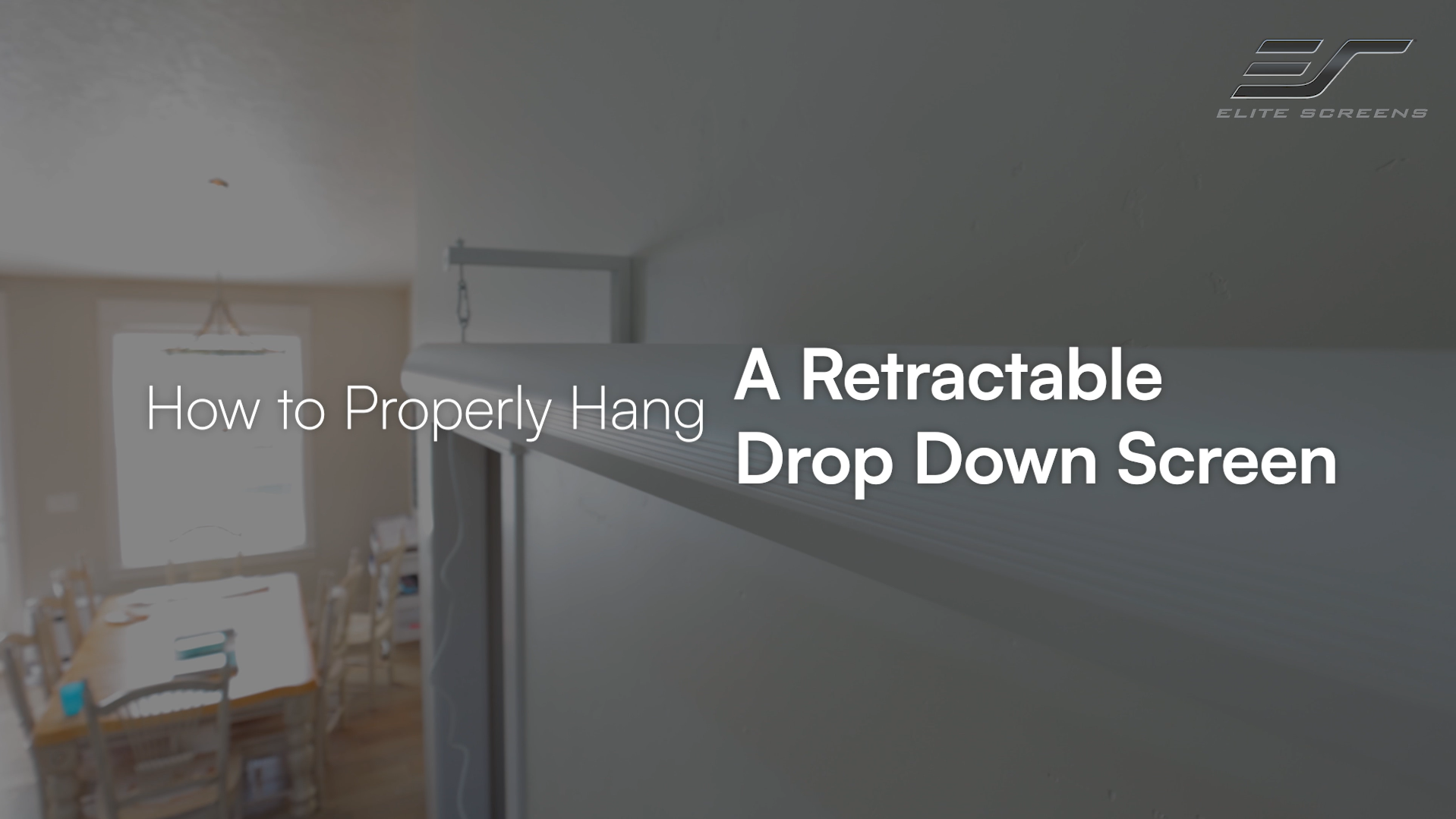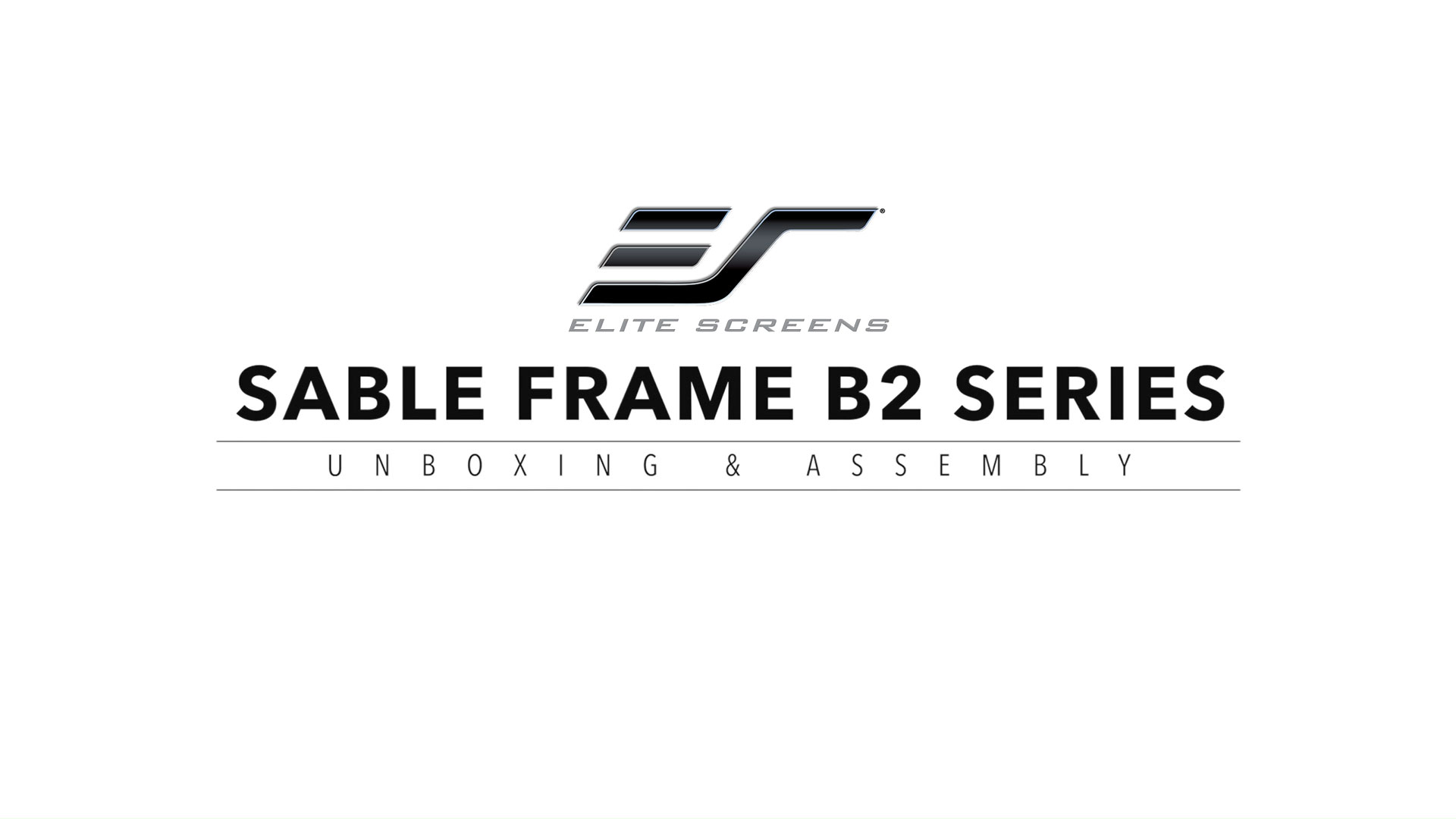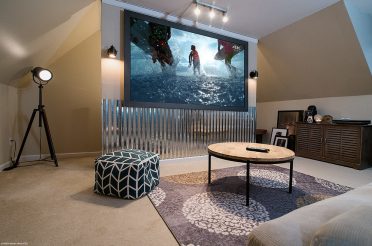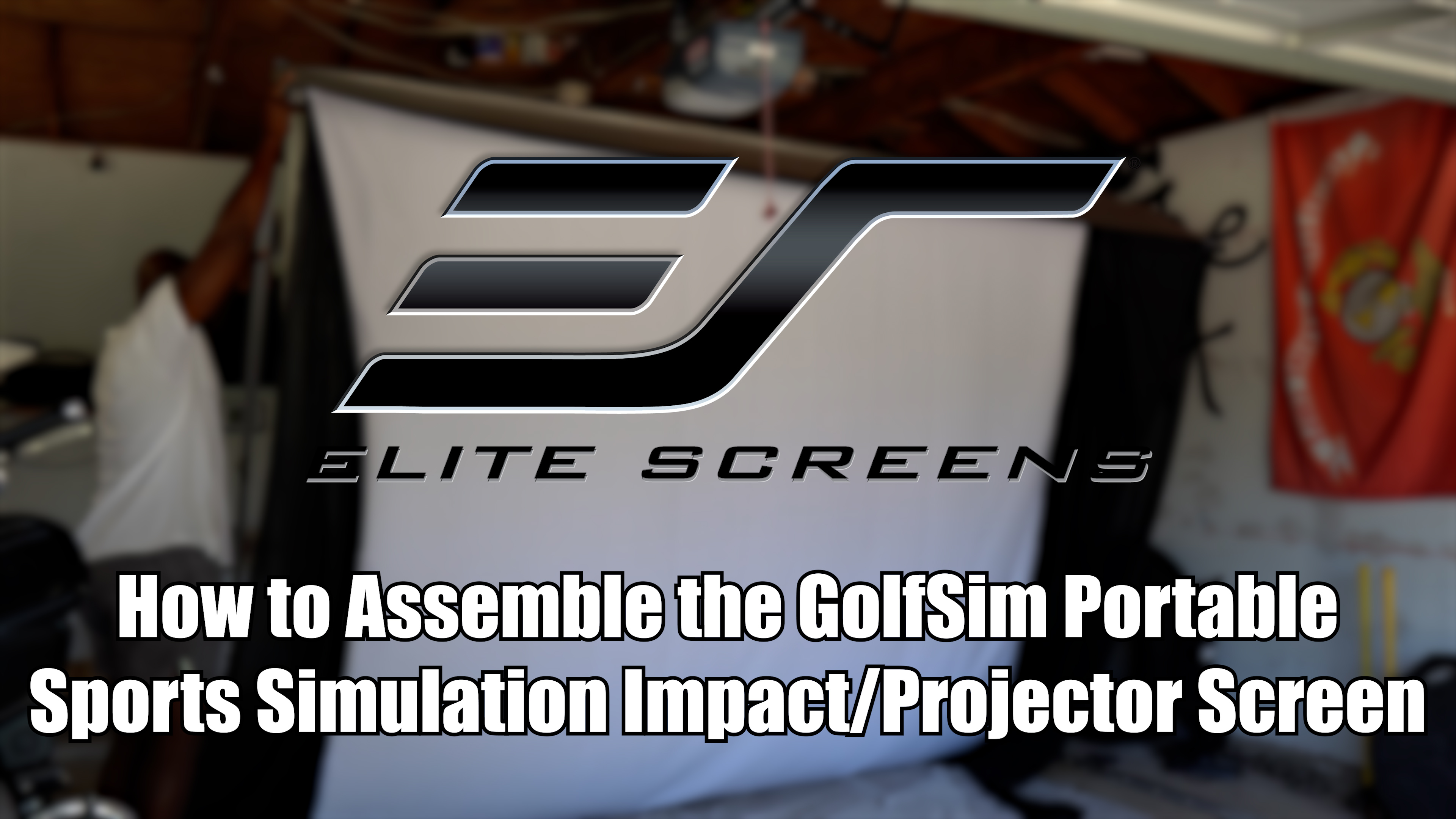12/26/2008 – Ross Jones, hometheaterhifi.com
Affordable Projectors for Non-Dedicated Home Theater Rooms – Mitsubishi HC5500 & Elite Cinema Screen
Introduction
I am continuing my journey into the world of affordable front projector systems, with a special emphasis on systems that are suitable for multi-use rooms. My first foray, the Sanyo PLV-Z2000, was a success. But I didn’t have anything to compare it to, at least in my own home environment. Now comes the first challenger, the Mitsubishi HC5500, another affordable 1080p projector. These projectors use the same basic display technology (LCD panels), so provide a pretty good apples-to-apples comparison.
Since the goal of the series is a relatively painless and economical way to set up a front projector system in a non-dedicated room, this installment also includes a look at the other end of the picture, the screen. While I’ve seen motorized, curved and acoustically perforated screens at trade shows and in dedicated home theaters, they are quite expensive. The average person buying an entry-level projector is unlikely to spend as much on the screen as they did on the projector. Plus, a permanently installed screen taking up an entire wall of a non-dedicated room is unlikely to pass the Spousal Approval test.
To address those needs, there is an entire market segment of drop-down screens, both ceiling and wall-mounted. My family room has cathedral ceilings, so a ceiling mounted screen isn’t an option. And because my current main display is a rear-projection TV, a wall-mounted screen won’t work either, unless I build a soffet to extend out beyond the front of my RPTV (RPTV’s, using DLP or LCOS technology, are typically around 14 inches deep). So I decided to keep it simple, and started with a pull-up portable screen, the Elite ezCinema Plus.
The Screen: Elite Screens ezCinema Plus Portable Screen
The Elite Screens ezCinema Plus is a portable, pull-up screen designed for traveling presentations or portable home theater applications. The Cinema Plus series uses a spring scissor mechanism for lifting the screen, rather than a telescoping pole found in the regular ezCinema series.
The ezCinema Plus comes in various sizes; in a 16:9 configuration up to 100” diagonal inches. The screens are available in white (1.1 gain) or grey (1.0) material, with ?” black top/side masking. The bottom masking is adjustable, depending on how high you lift the screen material out of its housing. The 84” screen is available for $389.99.
Setting up the screen is really easy: first pivot the two rotating feet 90 degrees for stability, flip up the latches, then open the lid and pull up on the screen handle. The screen lifts up easily, without bunching or balkiness, and stays put when you let go of the handle (no locking required). I did not notice any folds, wrinkles, or waves on the screen. Storing the screen simply involves reversing the above-process, which takes less than minute from start to finish. I left the screen in front of the RPTV when not in use. This is really a no-hassle, spouse-friendly way to have a projection screen in the room without installation hassles.
In Use
I fed the HC5500 a variety of program material, including DVD sourced from my Oppo DV-980H player, and high-definition material from both disc and cable TV. My subjective impression was that the Mitsubishi put out a somewhat brighter image that the Sanyo PLV-Z2000, but with slightly less detail than the Sanyo. I would guess that is a function of ANSI contrast.
Batman Begins is a popular demo disc, especially the training scene with Liam Neeson and Christian Bale fencing on a sheet of thin, cracking ice. The Mitsubishi’s image was quite bright, with colors that seemed reasonably life-like (although it seemed slightly oversaturated with user-level calibration). Television HD (1080i) was deinterlaced by the Mitsubishi without obvious artifacts, and programming that lacked quick panning action (like The Late Show with David Letterman) looked especially sharp. NFL football in HD had occasional problems with fast-moving images, but this is more an issue with LCD technology in general than anything specific to the HC5500. Overall, the HC5500 put out a bright, pleasing image similar to that of the Sanyo.
The Elite ezCinema Plus screen was a real treat, taking nothing away from the picture. Off-axis viewing was very good, with no obvious hot-spotting or loss of contrast. Despite lifting and lowering the screen many times over the review period, it never showed signs of wrinkling or uneven, wavy surfaces. The Elite Screens ezCinema Plus screen is a wonderful solution for those interested in front projection, but either cannot or don’t want to permanently install a ceiling or wall-mounted screen.
On the Bench
Uncalibrated, the color temperature was on the hot side (too blue). After calibration, the overall temperature was closer to D6500.
The uncalibrated RGB levels indicated red and green in the right place, but blue was far too high (the graph is an indication of gray scale tracking, i.e., whether the image stays white at all IRE levels or has specific tints at various IRE). After calibration, blue was closer to where it should be, but unfortunately, red and green were not nearly so smooth as they were in the uncalibrated state. Calibration of one item often affects others. The HC5500’s color controls are limited.
Gamma before and after calibration were insignificantly different (2.05 and 2.08 respectively).
There is plenty of brightness with this projector, so it works well in semi-darkened rooms. The contrast, on the other hand, is not very good. ANSI CR was 270:1, and the Full On/Off CR was less than 1000. I did not activate the Dynamic Iris for the measurements, because the iris does not generate true contrast. The iris simply makes dark scenes look better by closing down and producing less brightness so you won’t see the leakage in the dark areas of the scene. But this also makes the lightest areas darker. We can call this inter-frame contrast, because it measures the contrast between the dark areas of a dark scene frame that is shown with the iris closed down, and the light areas in another frame in a different scene that does not have dark areas, so the iris remains open. True contrast is measured within a single frame, between the lightest areas and darkest areas. Maximum contrast cability would be found within a single frame that has regions at 0 IRE and regions at 100 IRE, which takes into account not only light leakage, but the flare properties of the lens. We use the ANSI test pattern for this. Full On/Off contrast is also measured, but it is rare that a movie scene frame is totally black (0 IRE) or totally white (100 IRE).
I think the low contrast may be because Mitsubishi has to use lower cost LCD panels to keep the price down, and they simply cannot stop leakage through the panels with such a high output bulb. This leakage is seen in dark areas of a movie scene and also in the 0 IRE test pattern. Nevertheless, the image was pleasing and satisfactory.
